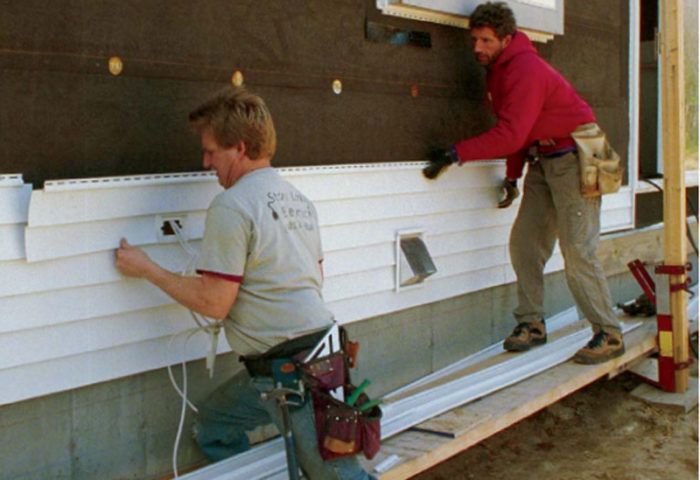Does Vinyl Belong on a Fine Home?
A look at the pros and cons of vinyl siding and polyvinyl chloride.

Synopsis: This essay discusses the merits of vinyl siding from an environmental perspective and describes what polyvinyl chloride (PVC) is, what other building products are made with it, and the environmental problems it causes.
Perhaps no other issue in custom-home building is as hotly debated as vinyl siding. Is it a quality product? Does it improve or cheapen the appearance of a home? Should it be avoided from an environmental standpoint? Or are the low maintenance and durability benefits of vinyl enough to outweigh concerns relating to the use of PVC—a material vilified by some environmental groups?
PVC is versatile, durable and inexpensive
There are many good reasons why vinyl jumped ahead of wood as the market leader in residential siding, why vinyl windows continue to gain market share against wood, why vinyl flooring is so popular and why PVC pipe and wire sheathing account for the vast majority of their respective markets. Polyvinyl chloride, commonly referred to as PVC or vinyl, is a highly versatile material, useful in a wide range of building applications: everything from rigid drainage pipe to highly flexible electrical-wire sheathing to wood-grain siding. PVC is rugged, with buried structural pipe able to withstand high compressive loading and PVC roof membranes able to carry 25-year warranties. PVC is low-maintenance, with vinyl siding requiring virtually no maintenance for decades; wood siding needs paint or stain as frequently as every five years. PVC is inherently fire-resistant, owing to its high chlorine content. PVC is even recyclable (though little post consumer PVC is actually used today). Finally, PVC is inexpensive, providing an affordable alternative to traditional materials, whether wood siding, cast-iron drainpipe or built-up roofing systems.
What exactly is PVC?
PVC is a plastic. To be specific, it is the polymerized form of vinyl chloride; chemists refer to it as poly (vinyl chloride), or polyvinyl chloride. PVC is often referred to as vinyl, but vinyl more correctly refers to a chemical radical (CH2CH) used in many organic compounds, such as vinyl acetate, a common ingredient in paint.
PVC is produced in a multistep process that involves combining chloride (from a brine solution of common rock salt) with ethylene (from natural gas) to produce vinyl chloride. This vinyl chloride then is polymerized to produce PVC. Polymerization, the process of combining organic molecules into long chains, is the basis of all plastics. Pure PVC is 57% chlorine by weight; the rest is hydrogen and carbon.
Early commercial production of PVC was hazardous. Mercury was used to separate chloride from sodium chloride, and open vats were used to polymerize the vinyl chloride monomer (VCM). After exposure to VCM was found to cause a rare liver cancer, angiosarcoma, the manufacturing process was cleaned up in 1971. Today, PVC production is highly regulated and far cleaner than it was a few decades ago.
PVC is the most widely used plastic in construction today; nearly 7 million tons were used in North America in 2000, mostly in piping and siding. To be used in these wide-ranging applications, PVC is mixed with various additives in a process called compounding. These additives include plasticizers, stabilizers, inert fillers, pigments and biocides. Hard PVC products, such as schedule-40 PVC pipe, may be as much as 90% PVC, and softer, more flexible PVC products, such as vinyl flooring, vinyl siding and vinyl shower curtains, may contain as little as 35% PVC.
For more details on vinyl siding, click the View PDF button below.
Fine Homebuilding Recommended Products
Fine Homebuilding receives a commission for items purchased through links on this site, including Amazon Associates and other affiliate advertising programs.

A House Needs to Breathe...Or Does It?: An Introduction to Building Science

Pretty Good House

All New Bathroom Ideas that Work
























